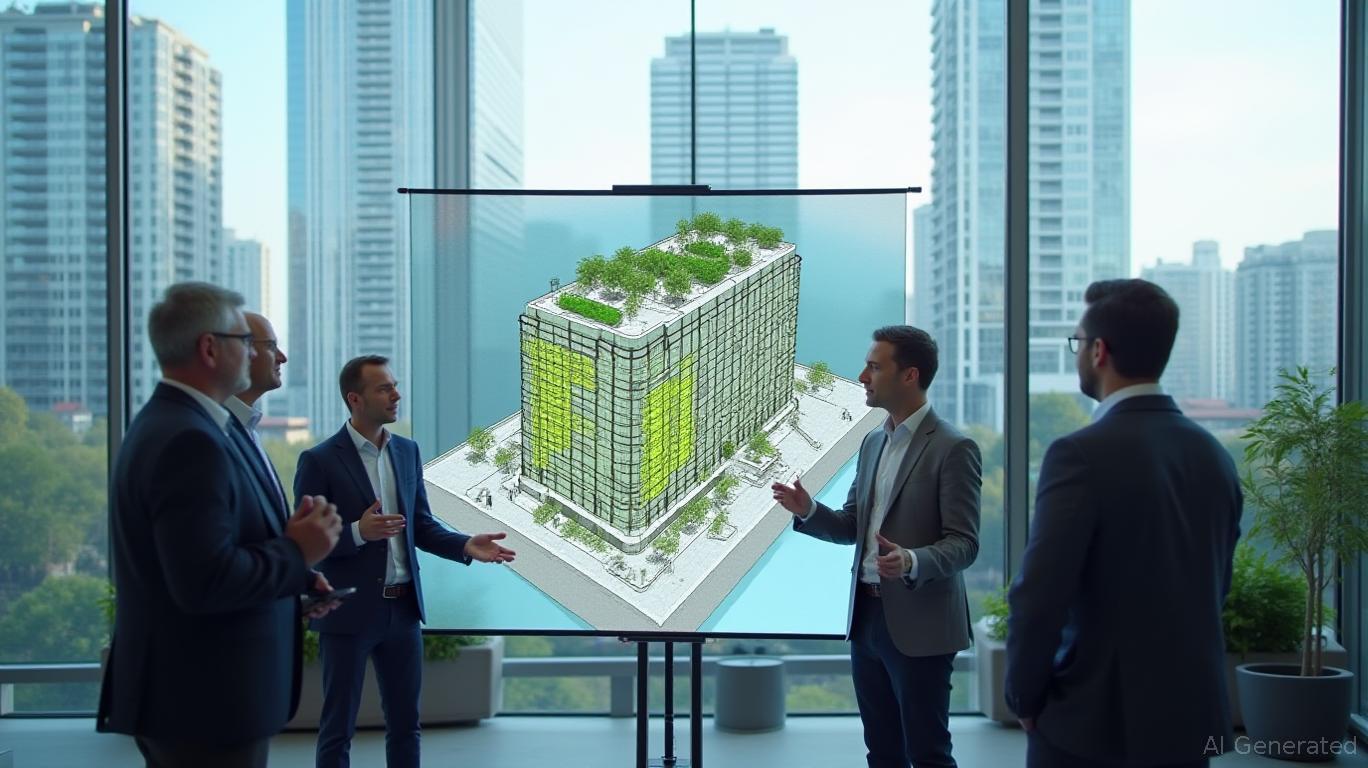Building a Sustainable Future: Arup and Autodesk's Carbon Management Revolution in AECO
The architecture, engineering, construction, and operations (AECO) sector is a climate change lynchpin: responsible for 34% of global carbon emissions, it must decarbonize aggressively to meet global sustainability targets. Yet, progress has been hampered by fragmented data, inconsistent methodologies, and the absence of scalable tools to track emissions across a project's lifecycle. Enter the strategic partnership between Arup, a global engineering firm, and Autodesk, a leader in design software, which is redefining the sector's approach to carbon management. Their collaboration, merging Building Information Modelling (BIM), artificial intelligence (AI), and whole life carbon assessment, offers a template for standardization—and a compelling investment opportunity in a sector primed for regulatory and market-driven transformation.
The Carbon Conundrum in AECO
The built environment's emissions stem from both operational energy use (heating, cooling, lighting) and embodied carbon—emissions from materials extraction, manufacturing, and construction. Until recently, these two streams were analyzed in isolation, with limited tools to assess their combined impact. This fragmentation has stifled efforts to achieve net-zero infrastructure, a priority under the Paris Agreement and the Buildings Breakthrough initiative, which aims to decarbonize the sector by 2030.
Arup and Autodesk's partnership addresses this gap by integrating BIM—a digital framework for modeling every aspect of a project's lifecycle—with AI-driven analytics. Their tools, such as Autodesk's Total Carbon Analysis for Architects, enable real-time tracking of carbon footprints from design inception, allowing architects and engineers to optimize materials and systems early in the process. Crucially, they are also advancing standardized methodologies for whole life carbon assessment, working with the World Business Council for Sustainable Development (WBCSD) to align these tools with global sustainability frameworks.

The Case for Standardization
Standardized carbon assessment tools are critical for two reasons. First, they enable comparability across projects, empowering investors and policymakers to allocate capital to the most sustainable options. Second, they reduce the risk of “greenwashing” by establishing transparent, auditable metrics. Arup's “Zero” platform, which aggregates carbon data from over 1,000 projects globally, and Autodesk's Total Carbon Analysis, which leverages AI to predict emissions trajectories, are foundational to this effort.
The partnership's emphasis on resolving discrepancies between global and local carbon datasets is equally vital. For example, regional differences in material sourcing and energy grids can skew emissions calculations. By harmonizing these inputs through BIM and AI, the duo is laying the groundwork for a universal carbon accounting system, one that could become the industry's de facto standard.
Investment Implications: AECO's Digital Transformation
The AECO sector's slow digital adoption—lagging behind manufacturing and IT—has amplified its climate footprint. Yet, the $18 trillion annual global construction market is now under pressure to modernize. Regulatory mandates, such as the EU's Carbon Border Adjustment Mechanism, and investor demands for transparency are pushing firms to adopt carbon management tools. For investors, this creates a dual opportunity:
Autodesk (ADSK): As a provider of BIM and AI platforms,
is positioned to capitalize on the sector's digitization. Its Total Carbon Analysis tool and Autodesk Forma (for generative design) are cornerstones of the Arup partnership. reveals its stock has underperformed the index, suggesting valuation may not yet reflect its sustainability tech potential.Early Adopters: Firms integrating these tools into their workflows—such as Skanska or Bechtel—will gain a competitive edge by delivering projects compliant with net-zero mandates. Their ability to quantify and reduce emissions could command premium pricing for sustainable assets.
Risks and Considerations
The partnership's success hinges on industry adoption rates, which are uneven. Legacy firms may resist upfront costs, while smaller players may lack the resources to implement BIM and AI systems. Additionally, data quality remains a challenge: inconsistent regional carbon databases could dilute the tools' accuracy.
Yet these hurdles are surmountable. The Buildings Breakthrough initiative, backed by governments and the UN, is incentivizing adoption through funding and policy alignment. Meanwhile, Autodesk's Tandem for AEC—which creates digital twins for post-construction asset management—demonstrates how BIM can extend value beyond construction into operations, justifying the investment.
Conclusion: A Pivotal Moment
Arup and Autodesk's collaboration is more than a tech partnership—it's a blueprint for the AECO sector's survival in a carbon-constrained world. By standardizing carbon assessment and leveraging BIM and AI, they are creating tools that could become mandatory for firms seeking to attract capital and comply with regulations. For investors, this is a long-term structural trend, with Autodesk's undervalued stock and the sector's digital transition offering asymmetric upside.
The stakes are existential: without decarbonization, the built environment's emissions will lock in climate catastrophe. Those who invest early in the technologies enabling this shift will not just profit—they will help build a sustainable future.
Investment Recommendation: Consider overweighting Autodesk (ADSK) in portfolios focused on decarbonization and digital transformation. Monitor the partnership's progress in standard-setting and adoption rates as key catalysts. For thematic funds, pair with AECO firms actively integrating these tools into their workflows.

Comments
No comments yet